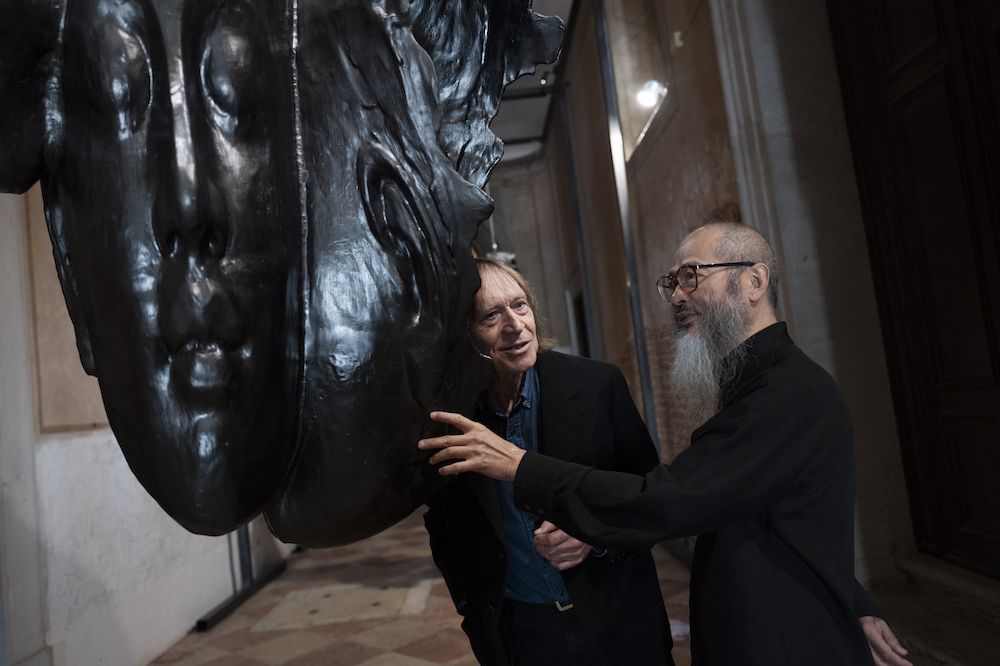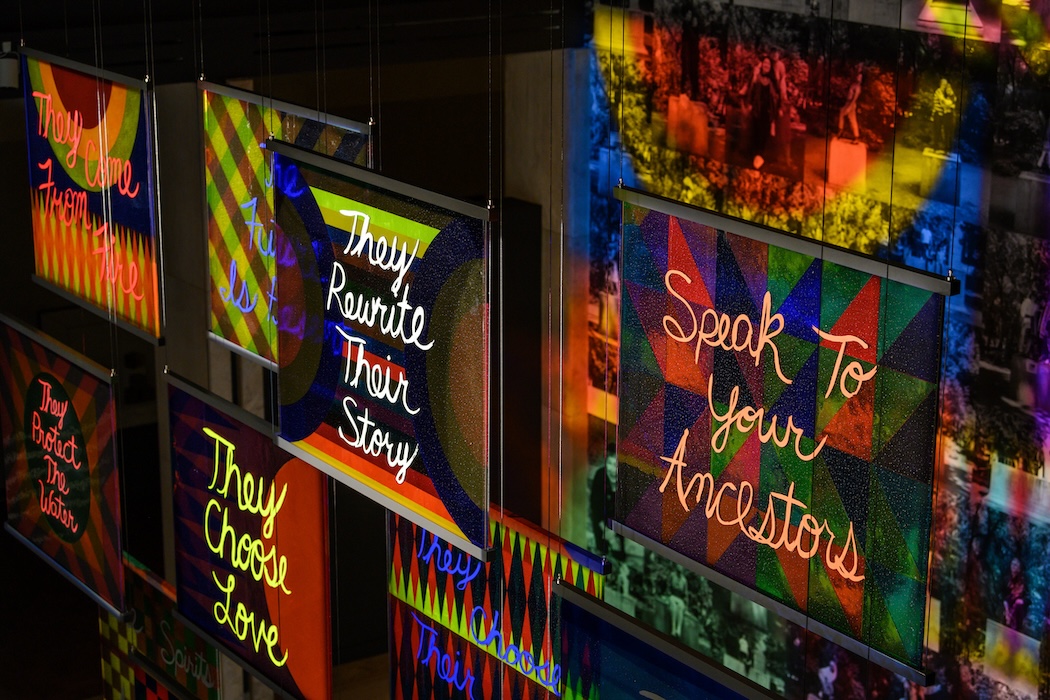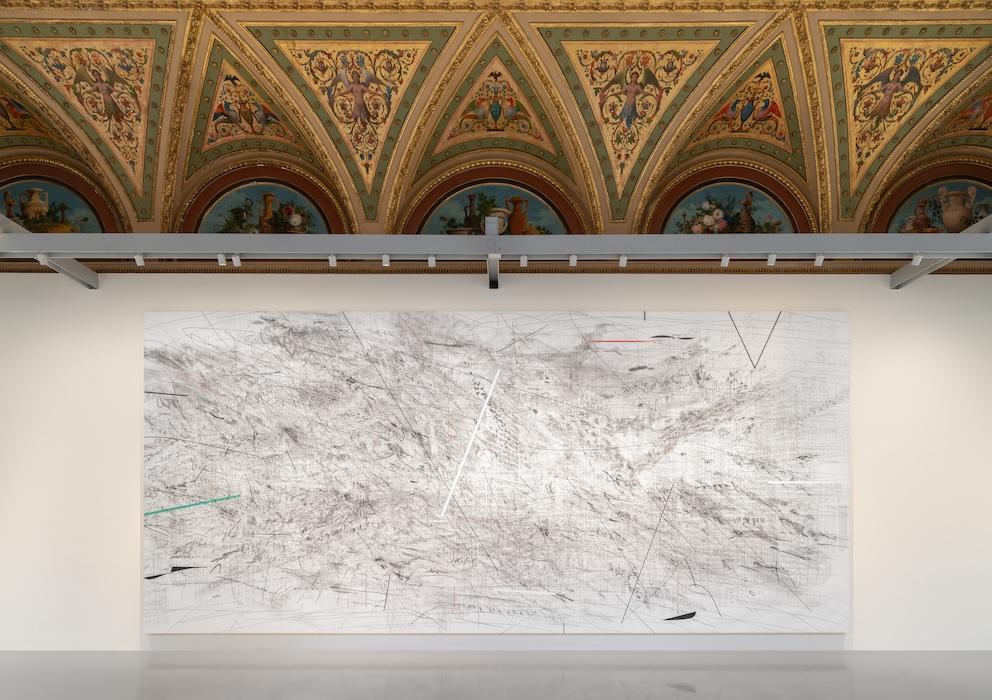As a child growing up in To Kwa Wan, a neighborhood in the east side of Kowloon in Hong Kong, Wallace Chan loved going to his local cha chaan teng (the Hong Kong version of an American diner) for treats like milk tea and pineapple buns. Its name was “Venice,” even though it didn’t serve anything Italian. Chan became fascinated with the famed island city and in the late 1980s, he heard about the Venice Biennale and decided to go. It would become a site of pilgrimage for the jewelry designer and artist, but he wouldn’t have his first exhibition there until 2021.
Nearly six decades after he first learned about the city, Chan showed “TITANS: A Dialogue Between Materials, Space and Time,” at the Fondaco Marcello in Venice. The following year, Chan exhibited “Totem” in Venice, again at the Fondaco Marcello. The Hong Kong artist opened “Transcendence,” his third exhibition there this year on April 19, coinciding with the opening of the 60th Biennale Arte. Open through September 30, the show, located a nine-minute walk from Piazza San Marco at Santa Maria della Pietà, is a continuation of Chan’s exploration of the use of titanium.

Santa Maria della Pietà ©Federico Sutera.
Wallace Chan’s “Transcendence” at Santa Maria della Pietà
The first large-scale sculpture you encounter in the show dangles from the ceiling with an enormous face that’s almost melting with a horrified expression, its eyes and mouth wide open. Chan—who sees sculpture as the macro version of his fine jewelry practice—said this is supposed to represent a cold and chaotic winter. “Humans are always good at overcoming difficulties and persevering,” Chan told us through a translator. “[They overcame] winter by getting fire and clothes. Humans managed to survive the cold winter.”

Wallace Chan, “Transcendence,” photo by ©Federico Sutera.
Each sculpture represents one of the four seasons. The second sculpture looks as if the chaotic face is peeling away to reveal a more tranquil mood overtaking the figure. The final face twists into itself, making way for the fourth and final large-scale sculpture of a flower. “It’s like the conflict all the way towards the tranquility,” said Chan. “This is what the exhibition wants to talk about.”
At the church’s altar stands smaller sculptures, one that looks like Jesus sitting cross-legged, and the other of Buddha. Chan experienced the two religions throughout his life with Christian parents and a Buddhist grandmother. He would go to his local church for bread and milk before going home, where his grandmother would have him burn incense for blessings for his ancestors. In his thirties, he learned more about Buddhism, eventually becoming a monk. “It’s very conflicting for Mr. Chan because he has both [nostalgia for] the Buddhism and the Christianity,” said the translator.
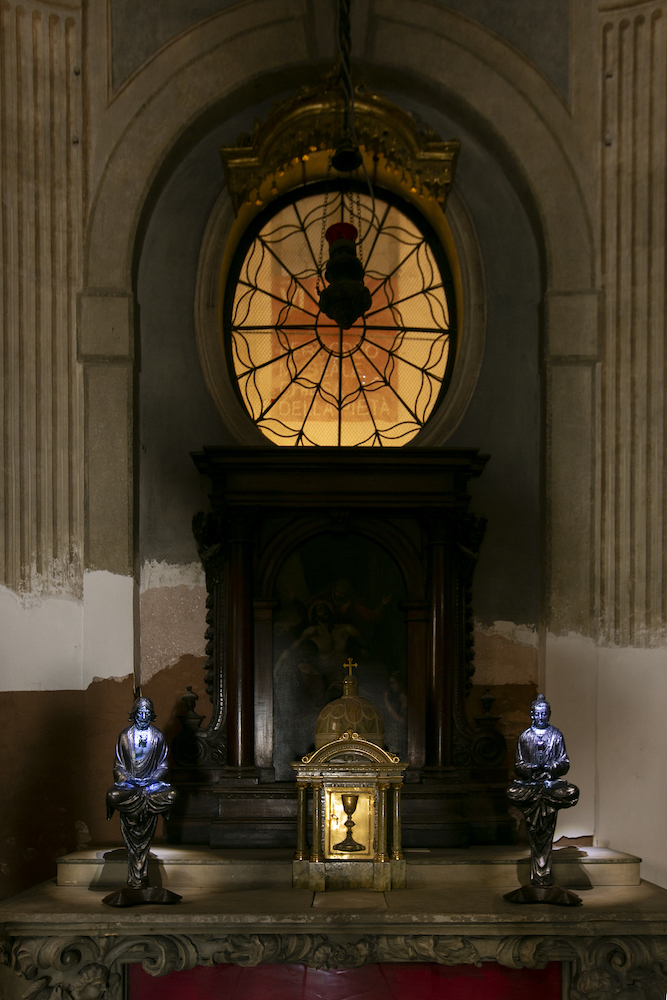
Wallace Chan, “Transcendence,” photo by ©Federico Sutera.
A Soundscape by Brian Eno
James Putnam, the exhibition’s curator, had an idea to present a soundscape to add depth to the exhibition. He suggested Brian Eno’s I Dormienti, a soothing melody, which, he said, “was originally conceived for a project I curated for a sculptural installation by Mimmo Paladino and Brian Eno at the Roundhouse, London in 1999 and used again in L’Ara Pacis, Rome in 2008.” Chan was sold. “It’s the sound from the universe and I instantly felt there’s a spiritual connection to this music,” said the artist.
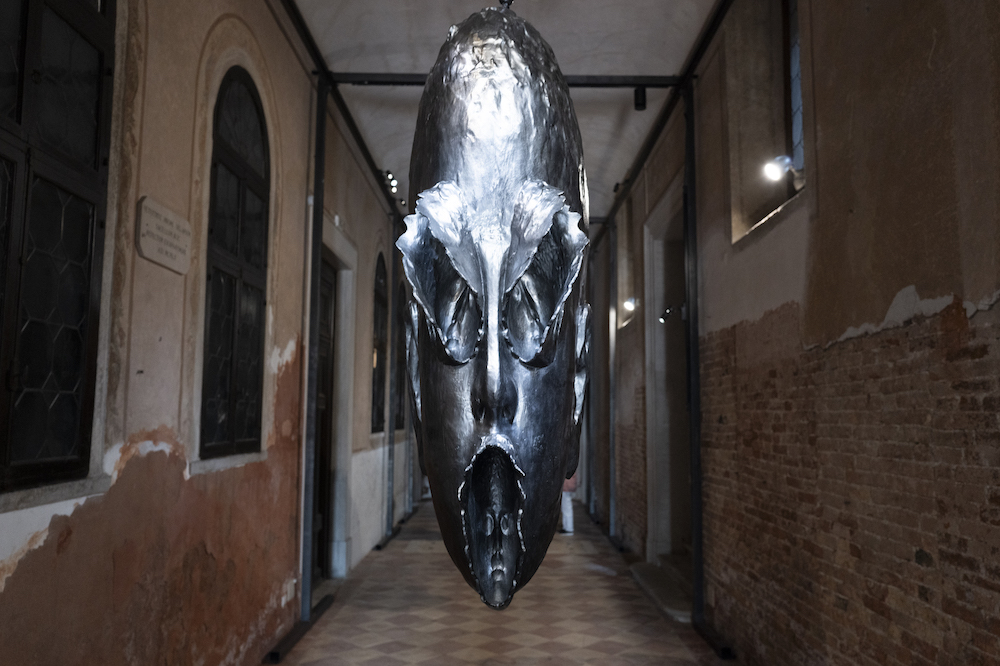
Wallace Chan, “Transcendence,” photo by ©Federico Sutera.
“Together with the soundscape we hope the sculptures evoke in the visitor an experience of the spiritual and metaphysical that is not intended to relate to a specific religious belief like Buddhism or Christianity but rather an interrelationship and affinity between them,” said Putnam. “In this way, we are hoping to create an atmosphere of contemplation for the visitor as a respite from the visual overload of the Biennale.”
Hanging the heavy sculptures proved to be challenging. “Installing the hanging sculptures in such a historic building meant that we needed to design and construct a system of trusses to suspend them without causing any damage to the architecture,” said Putnam. “This also needed to be discreet and unobtrusive so as not to disturb the harmony of the sculptural installation. We also wanted to avoid having any information panels or supporting visual material so the visitor could fully immerse themselves in the experience of viewing the sculpture and hearing the soundscape without distraction.”
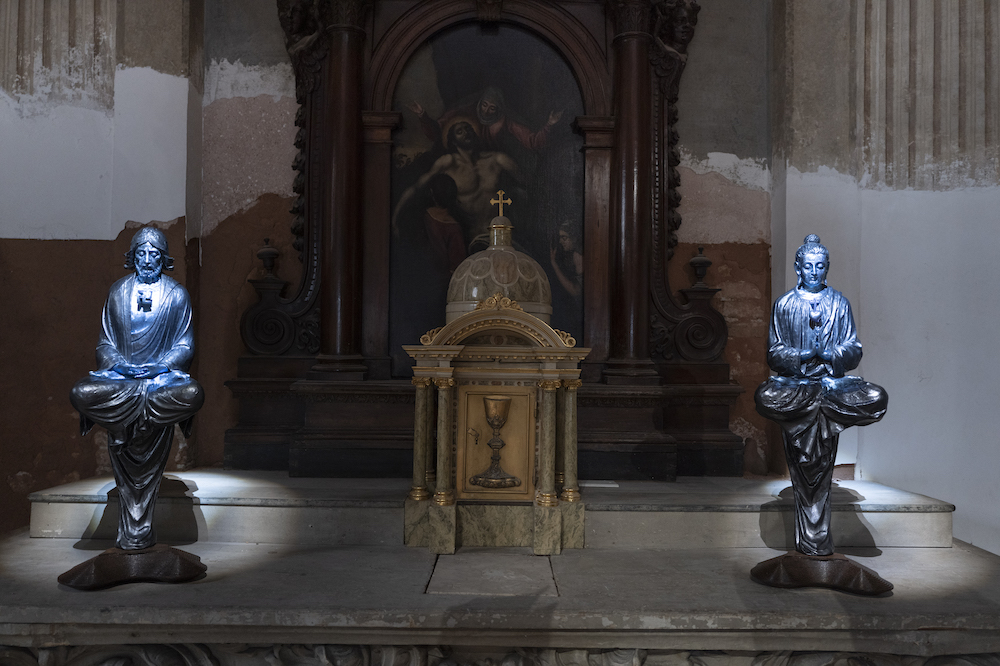
Wallace Chan, “Transcendence,” photo by ©Federico Sutera.
Wallace Chan Hopes to Bring Visitors on a Spiritual Journey
Outside the church, the bright sun beams down as water taxis and vaporetto engines buzz by, along with the heavy tourist traffic and souvenir vendors hawking their goods. The artist hopes that visitors will have their own transcendence as they walk through the exhibition.
“This is actually like the transition area when you can inside the lights dimmer,” said Chan, referring to the foyer. “And then you hear only this soundscape. So it’s totally different. It’s like from the conflict to the tranquility and when you reach the end of chapter four, you will see that there are two sculptures on the altar. It means that all religions are interconnected. It’s full of great love, and I hope after doing a tour of this exhibition you will feel very refreshed and be born. You will feel about this new experience and it will be like a spiritual journey.”
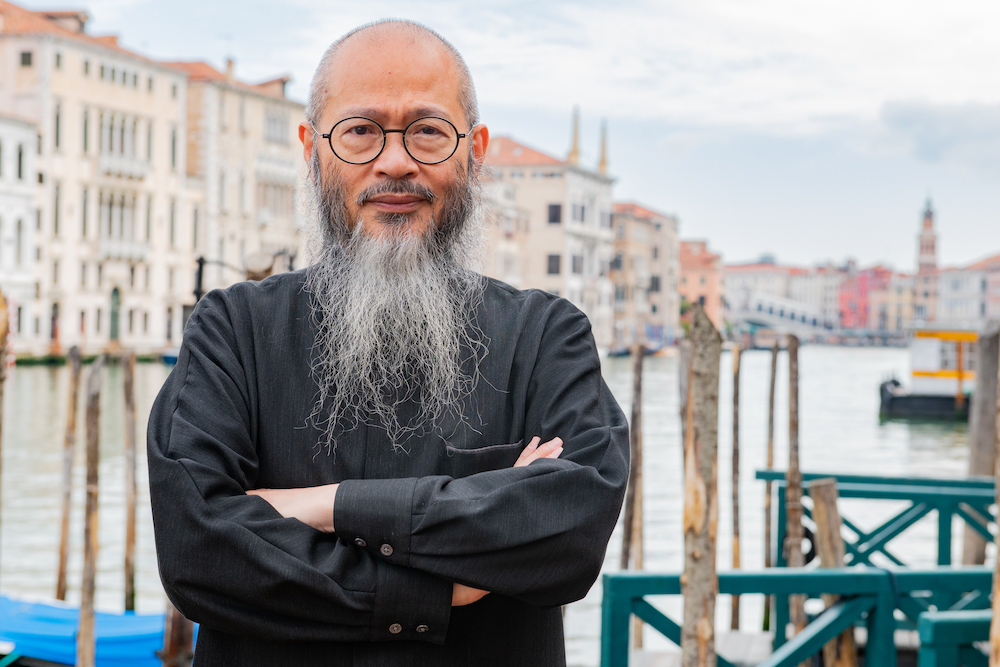
Wallace Chan © Giacomo Cosua.
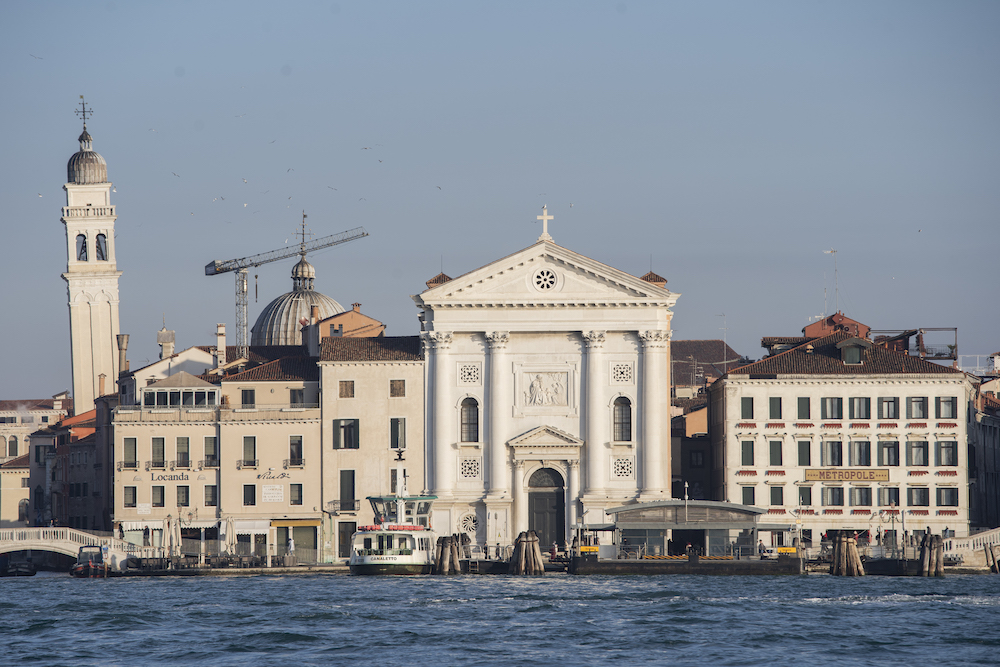
Santa Maria della Pietà ©Federico Sutera.



